Throughout the globe, scientific experiments are carried out each day. They ask “what if” questions and eagerly await the results. Perhaps it’s testing another variant of a specific gene or pondering over the most suitable code for a particular problem. This curious and tenacious spirit is fundamental to our capacity to discover anything. However, the experiments devised by our scientists can sometimes be incredibly peculiar. We have handpicked a few of these offbeat scientific experiments to highlight the time when human curiosity is at its most unconventional and intriguing. Regardless of whether the results are refined or rough, these distinctive experiments ultimately provided insights that were previously unknown.
Here are 25 such strange endeavors that could one day be hailed as the strangest science experiments of all time.

The spiders and the urine
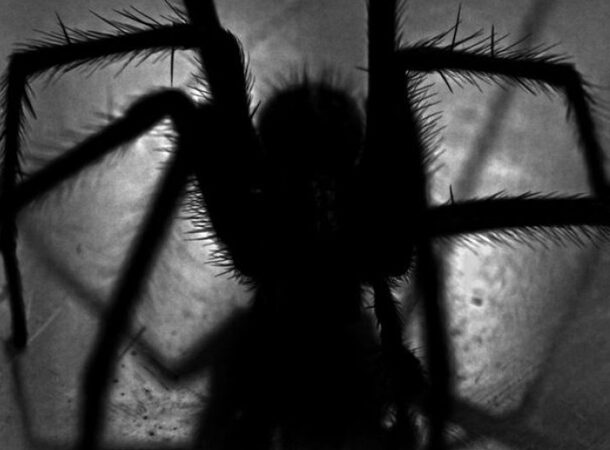 https://gizmodo.com/the-experiment-that-proved-spiders-dont-like-human-uri-1471676609
https://gizmodo.com/the-experiment-that-proved-spiders-dont-like-human-uri-1471676609 We’re kicking today’s list off with an experiment conducted on unsuspecting spiders. Because why not. In 1955, scientists made an attempt to come up with a unique technique to detect schizophrenia. They fed a concentration of fifteen schizophrenics’ urine to spiders and compared the resultant webs they spun to those made by spiders who had been fed the researchers’ urine instead. No systematic differences could be observed. However, the researchers did discover one thing: concentrated urine tasted exceptionally horrible. After only one sip, the spiders expressed an intense aversion to any further interaction with the concentrated solution.
Trust me, I’m a doctor
 https://learningspy.co.uk/psychology/dr-fox-teaches-us-importance-subject-knowledge/
https://learningspy.co.uk/psychology/dr-fox-teaches-us-importance-subject-knowledge/ In 1970, a supposed expert named Dr. Myron L. Fox gave a talk on “Mathematical Game Theory as Applied to Physician Education” to a bunch of psychologists and psychiatrists. The speaker, however, was an actor who had absolutely zero knowledge of the subject. The lecture’s goal was to investigate “educational seduction.” Dr. Fox used his acting skills to connect with the audience during the experiment, even though the content was completely nonsensical and had a lot of gibberish. Surprisingly, the lecture was judged as captivating and informative by the audience. The phenomenon was dubbed the Dr. Fox Effect. The study highlighted how a charismatic speaker can fool intelligent people into believing worthless information. One reporter later commented if an actor can be a better teacher, they can also be a better congressman or even the president. Funnily enough, ten years later, Ronald Reagan was elected president of the United States.
A year in bed (and then some)
 http://www.ncbi.nlm.nih.gov/pubmed/2593607
http://www.ncbi.nlm.nih.gov/pubmed/2593607 In January 1986, 11 guys went to bed in Moscow and didn’t get up for the following 370 days. They were bathed lying down; they ate, read, watched television, and wrote letters – all while lying down. The study was conducted to simulate the consequences of weightlessness on Earth. While similar studies had been done before, the 370-day time frame was the longest attempt ever, and it had several unforeseen complications in addition to the medical outcomes. Some marriages failed due to stress, and one of the men fell in love with a scientist involved in the project. As a reward for their efforts, each member was offered a car – a hot commodity in the Soviet Era.
Why Brazil nuts go to the top of the bag
 https://www.manchester.ac.uk/discover/news/scientists-crack-the-brazil-nut-puzzle-how-do-the-largest-nuts-rise-to-the-top/
https://www.manchester.ac.uk/discover/news/scientists-crack-the-brazil-nut-puzzle-how-do-the-largest-nuts-rise-to-the-top/ Scientists finally figured out the answer to a question that has kept housewives and nut connoisseurs up since time immemorial. Why do Brazil nuts always end up at the top of the bag? After wasting several hours mixing nuts and shaking the bags, they discovered the answer – doing xrays after each shake. Turns out that Brazil nuts move into vertical positions when being shaken, and they get pushed upwards with every shake. The scientists hope their earth-shattering findings will aid engineers in developing better methods to minimize size segregation in other mixes, which, while critical for bags of nuts, could also have crucial uses in medicine and construction.
Human-cow hybrids
 http://seedmagazine.com/content/article/is_this_cow_a_human-animal_hybrid/
http://seedmagazine.com/content/article/is_this_cow_a_human-animal_hybrid/ We know a human-cow hybrid may sound like something from a terrible science fiction novel. Still, a Dutch biotech firm may introduce this phenomenon to your table faster than you imagine. Scientists genetically modified cows to ensure the milk they produce includes the human protein lactoferrin, which can be found in human breast milk. The protein prevents a wide range of diseases and is an excellent immune system booster. Scientists are hoping to make dairy products with comparable health benefits and nutrition using the protein-packed milk.
Human-mouse hybrids
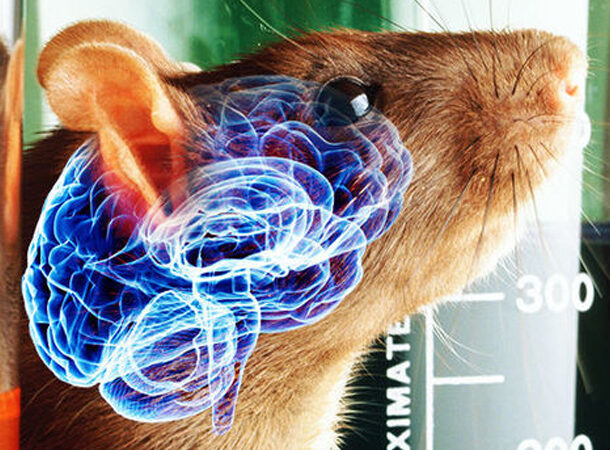 http://www.washingtonpost.com/wp-dyn/content/article/2005/12/12/AR2005121201388.html
http://www.washingtonpost.com/wp-dyn/content/article/2005/12/12/AR2005121201388.html While we’re on the subject of human hybrids – In 2005, human embryonic stem cells were implanted into the brains of fetal mice while they were still in the womb. Scientists then discovered that human brain cells formed alongside the mouse brain cells after the mice were born, demonstrating that human stem cells can turn into human brain cells in other living animals. Scientists hope this technique will increase scientific studies on human brain disorders and improve our testing of experimental drugs and specific medical trials.
Bug-mind control
 https://www.technologyreview.com/2009/01/29/95502/the-armys-remote-controlled-beetle/
https://www.technologyreview.com/2009/01/29/95502/the-armys-remote-controlled-beetle/ Have you seen the movie “Eye in the Sky”? The army makes use of fascinating bugs to help them take out their targets. If you did (it was a great movie) and wondered where the idea came from, wonder no more. DARPA-funded scientists at the University of California implanted electrodes in enormous flower beetles in 2009, allowing them to wirelessly instruct the beetles to turn, take off, or hover in mid-flight. The Pentagon can deploy these technological terrors to aid them with search and rescue missions, and they also come with the added benefit of covert surveillance and monitoring.
Teaching cuttlefish to wear glasses
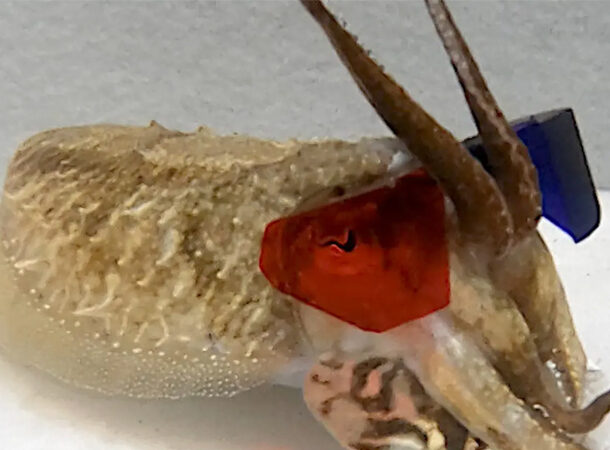 https://www.theguardian.com/science/2020/jan/08/scientists-play-shrimp-films-to-cuttlefish-in-3d-vision-study
https://www.theguardian.com/science/2020/jan/08/scientists-play-shrimp-films-to-cuttlefish-in-3d-vision-study COVID really messed with our minds. In 2020, scientists put 3D glasses on a cuttlefish to observe how they attack their prey. The University of Minnesota scientists showed the mollusks images of tasty-looking shrimp to understand how they evaluate distance before attacking. The scientists admitted that convincing the cuttlefish to wear the glasses was the most challenging part of their experiment. The team worried the fish would pull them off or splash ink into their aquariums. As such, they devised a unique strategy that included careful handling, diversion, and bribery with a significant amount of shrimp. Cuttlefish have some really weird eyes, even by the standards of aquatic life. The wavy-looking slits move independently of one another, providing the mollusks with a 360-degree degree of vision. Following their ridiculously strange experiment, the scientists determined that cuttlefish use stereopsis to triangulate distance.
The 28h day
 https://www.lib.uchicago.edu/collex/exhibits/discovering-beauty/mammoth-cave/
https://www.lib.uchicago.edu/collex/exhibits/discovering-beauty/mammoth-cave/ Once upon a time, scientists were really perplexed by the 24h day patterns we lived by and wondered if the sleep-wake pattern of 24 hours was simply a habit that could be changed at any time or whether people had an intrinsic, hard-wired biological clock. Nathaniel Kleitman, a sleep researcher, searched for a location where there existed no distinction between day and night. He found it in a 20-meter-wide and 8-meter-high rock chamber in Kentucky’s Mammoth Cave, where he and a student named Bruce Richardson decided to play around with a 28-hour day. They would work for 10 hours, sleep for 9 hours, and have leisure time for 9 hours every day. The two stayed in the cave for a total of 32 days. Richardson, the younger of the two, adapted within less than a week, whereas Kleitman failed to adapt. Showing that we should all try new things while we’re still young!
The real underdogs
 https://www.cnn.com/2015/10/28/world/china-mutant-dogs-genetic-engineering/
https://www.cnn.com/2015/10/28/world/china-mutant-dogs-genetic-engineering/ Does anyone remember the movie “Underdog”? Our next entry is a strange experiment that straddles the line between awesome and terrifying: canines with double their usual muscle mass. In 2015, geneticists at Nanjing University in China discovered a way to remove the myostatin gene from dog embryos. The gene reduces animal muscle growth. Hercules and Tiangou, the resulting power pups, became the first dogs with the specific genetic modifications. Scientists hope that the trial will eventually contribute to the discovery of a treatment for human ailments such as muscular dystrophy.
RFID implants for humans
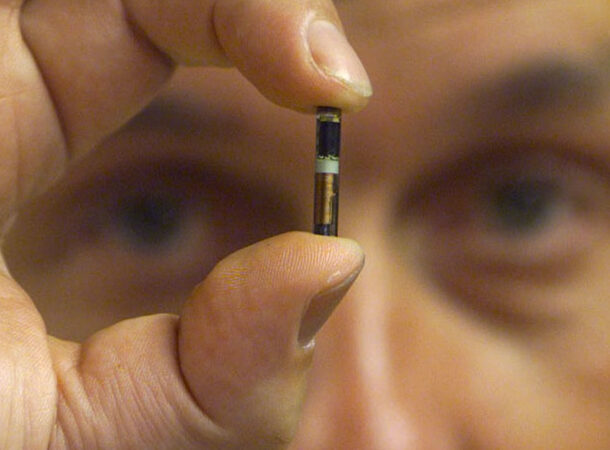 https://www.informationweek.com/it-life/fda-approves-rfid-tags-for-humans
https://www.informationweek.com/it-life/fda-approves-rfid-tags-for-humans For years, we have placed radio-frequency identification (RFID) chips into our pets to assist in identifying and returning them if they get lost. We didn’t foresee that the technology would eventually be used to follow and track us. In 2004, the FDA approved human implantation, which meant that jails, hospitals, and businesses all decided to utilize the chips to track people’s locations and medical history and give or restrict access to rooms and documents. If you thought it was still a far-off idea, we are here to correct that notion. Many state correctional facilities today already use the technology to track convicts’ movements and locations, and a few corporates have already jumped onboard.
Psychological prejudices are natural defense mechanisms
 https://pursuit.unimelb.edu.au/articles/the-ugly-truth
https://pursuit.unimelb.edu.au/articles/the-ugly-truth Whether you like it or not, you judge people based on their appearance. So do I. So do the rest of us. However, it is not by choice. In fact, according to recent research from psychologists at the University of Melbourne, prejudice against people we find ugly is a natural defense mechanism we utilize to keep ourselves healthy. Although ugliness is subjective, everyone considers specific characteristics, such as bodily fluids and skin disorders, unattractive. Unconscious bias against people with less-than-flattering appearances is a worldwide issue that has significant repercussions in people’s lives. Ugly people are less employable, less successful, and more likely to be heavily sentenced if they find themselves accused in court.
An exercise in mind control
 http://www.youtube.com/watch?v=GzAFCAuP6qY
http://www.youtube.com/watch?v=GzAFCAuP6qY In the 1960s, Jose Delgado, a Spanish neurologist at Yale University, was not only confident that electrical stimulation of the nervous system was vital to understanding the biological roots of social behavior; but he was also willing to prove his case in a very unusual way. On a spring evening in 1964, he met Lucero, a 250-kilogram fighting bull that belonged to a landowner by the name of Ramón Sánchez, who had agreed to let Delgado use a tiny exercise ring on his estate in Córdoba for the experiment. Delgado implanted radio-controlled electrodes into Lucero’s brain several days before the experiment. The results surprised everyone. Lucero charged toward him, and Delgado pressed the remote control button. This instantly subdued the animal’s rage, and Lucero slid to a halt and trotted away. Delgado’s experiment was significant enough to feature on the front page of the New York Times.
Proving a common cold has nothing to do with cold temperatures
 http://www.mod.uk/DefenceInternet/AboutDefence/WhatWeDo/HealthandSafety/PortonDownVolunteers/TheMedicalResearchCouncilCommonColdResearchUnit.htm
http://www.mod.uk/DefenceInternet/AboutDefence/WhatWeDo/HealthandSafety/PortonDownVolunteers/TheMedicalResearchCouncilCommonColdResearchUnit.htm In 1946, being a guinea pig for the British government’s Common Cold Unit was extremely popular among students. They saw it as an inexpensive holiday, with free lodging in huge flats fully furnished with games, books, radio, and telephone. They were even paid three shillings every day. The unpleasant aspect of the experiment began when the participants were forced to spend 30 minutes in a windy, cold corridor after taking a hot bath, were forced to wear wet socks for the remainder of the day, and were infected with nasal mucus from a cold sufferer. Gross… The experiments did prove, however, that the common cold had nothing whatsoever to do with cold weather.
Paving the way for “Planet of the Apes”
 https://www.iflscience.com/brain/scientists-make-bigger-monkey-brains-with-the-help-of-a-human-gene/
https://www.iflscience.com/brain/scientists-make-bigger-monkey-brains-with-the-help-of-a-human-gene/ By using a human gene, scientists were recently able to significantly increase the size of a monkey’s brain. The ARHGAP11B gene was given to 101-day-old marmoset fetuses by scientists at the Max Planck Institute for Molecular Cell Biology and Genetics. The gene has been demonstrated to increase the formation of stem cells in the brain. In fact, scientists believe it played an essential part in the history of human evolution. The marmosets quickly reacted to the foreign gene. The neocortex portion of their brains, which is responsible for reasoning and language, was found to be significantly enlarged by the (mad) scientists. Planet of the Apes, anyone?
Pig guts regrowing new limbs
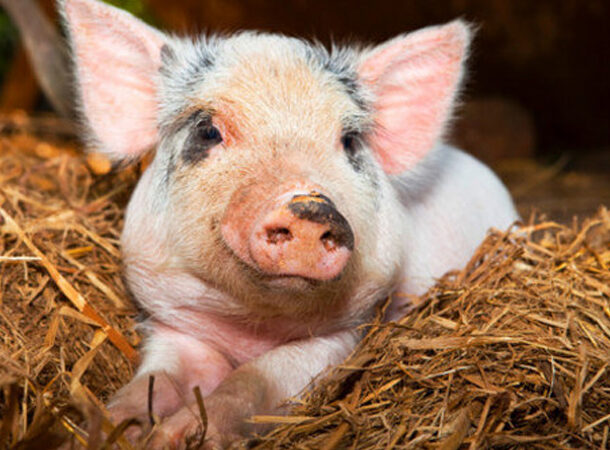 http://discovermagazine.com/2011/jul-aug/13-how-pig-guts-became-hope-regenerating-human-limbs#.UnfDK7TtXTQ
http://discovermagazine.com/2011/jul-aug/13-how-pig-guts-became-hope-regenerating-human-limbs#.UnfDK7TtXTQ Scientists have discovered that pig bladder tissue may be processed into a powder dubbed extracellular matrix and used it to regrow human fingers. Unlike typical mammals, which repair injuries by producing scar tissue that blocks future cell regrowth, the cells that reside in the lining of a pig’s bladder carry a protein that induces entire tissue regrowth, similar to how lizards regrow their tails. So far, the procedure has been used to reattach severed fingers, grow new fingertips, and have even assisted in regenerating one injured Iraq War veteran’s muscles.
Mice and Milkshakes to help scientists understand autism
 https://www.iflscience.com/brain/mice-and-milkshakes-give-neuroscientists-a-tool-to-understand-autism/
https://www.iflscience.com/brain/mice-and-milkshakes-give-neuroscientists-a-tool-to-understand-autism/ Scientists at Australia’s The Florey Institute unveiled a rodent-based experiment in 2020, claiming it gave them fresh insights into neurodivergent behavior. It is difficult to assess a mouse’s attention span – many scientists have tried, but the mouse usually loses interest and starts squirming and wandering about. They were placed in a testing box to keep the mice from escaping and held in place using laser beams. The mice were then rewarded with strawberry milkshake if they could probe it with their noses as a stimulus flashed on a screen. It may sound quaint to feed mice milkshake in exchange for poking their noses into a screen, but scientists believe it might advance their knowledge of neurodivergent behavior. Furthermore, it opens up new avenues for future studies into the effects of medications and genetics on autism and other comparable diseases.
The release of the stomach-bursting parasites
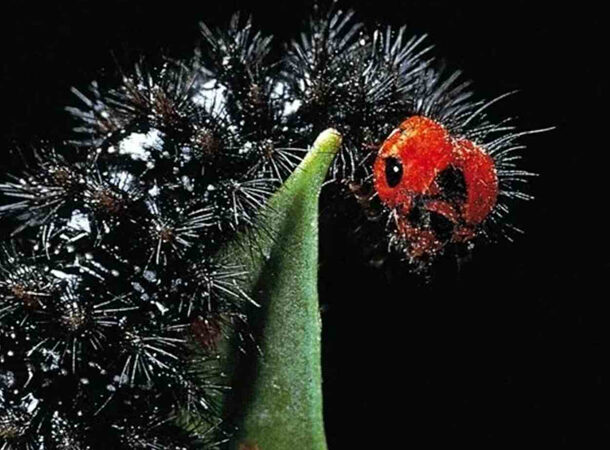 https://onlinelibrary.wiley.com/doi/10.1111/mec.16065?af=R
https://onlinelibrary.wiley.com/doi/10.1111/mec.16065?af=R Science can be stupid. Ilkka Hanski, a Finnish biologist, placed the Glanville fritillary butterfly on the lonely island of Sottunga decades ago to study how a population of one species could live inside a hostile habitat. He had no idea that the butterflies harbored a stomach-bursting parasitic wasp and that those wasps, in fact, came with their own smaller, stomach-bursting hyperparasite. The wasps exploded when the butterflies were released on Sottunga, spreading throughout the island with their hosts. This experiment presented later scientists with not only an interesting ecological study but also an urgent reminder that before moving endangered species into unexplored regions, we must first understand the physiological webs that thrive around them.
The quest to stop masturbation
 https://www.chemistryworld.com/podcasts/potassium-bromide/6805.article
https://www.chemistryworld.com/podcasts/potassium-bromide/6805.article In the past, scientists feverishly tried to stop the flow of blood below the belt. Masturbation was blamed for anything from insane violence to rounder shoulders. Some tried prayer, others diet – which is how an early form of Graham crackers was produced – while others understood that medical remedies were the only option. They discovered that when exposed to potassium bromide, participants masturbated less. The drug was heralded as a specific cure until doctors found that people basically did everything less while under the effect of potassium bromide. Masturbation was promptly re-branded as something that drives the great majority of internet traffic, while the substance was promptly re-branded as nothing more than a sedative.
Winthrop Kellogg's ape experiment
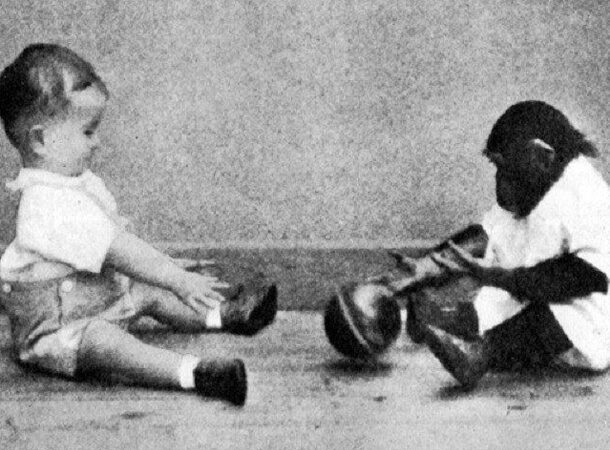 https://www.smithsonianmag.com/smart-news/guy-simultaneously-raised-chimp-and-baby-exactly-same-way-see-what-would-happen-180952171/
https://www.smithsonianmag.com/smart-news/guy-simultaneously-raised-chimp-and-baby-exactly-same-way-see-what-would-happen-180952171/ Winthrop Kellogg had an unhealthy interest in the concept of feral children. A comparative psychologist, Winthrop and his wife obtained a baby chimp named Gua in the early 1930s and raised her alongside their young son, Donald. Gua originally outperformed Donald in tests including memory, reflexes, handwriting, strength, agility, climbing, language comprehension, problem-solving, and other skills. But she soon reached a plateau, and Donald, instead of speaking English, started to mimic the vocalizations of his “sister” Gua. Shortly after, the Kellogg’s abruptly halted the experiment without much explanation. While Gua showed no signs of learning anything else, the couple received more than they hoped for when their son Donald became more ape than man.
Creating “daddy-shortleg” spiders
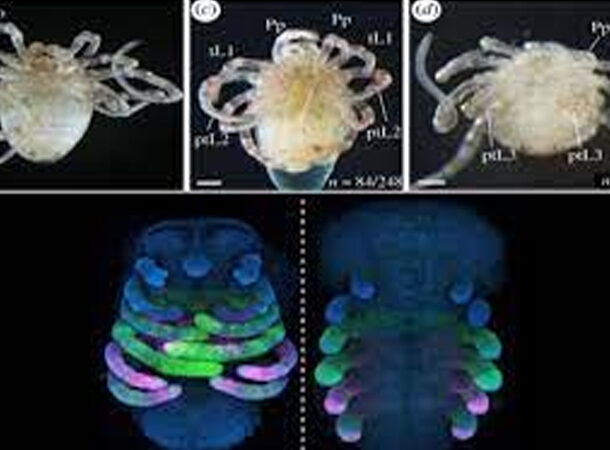 https://www.cnet.com/science/scientists-tweak-daddy-long-legs-genes-to-make-daddy-short-legs/
https://www.cnet.com/science/scientists-tweak-daddy-long-legs-genes-to-make-daddy-short-legs/ In 2021, scientists decided to mess around with spiders yet again by creating a “daddy shortlegs” spider. They achieved this not-so-amazing feat by turning off essential genes in the daddy longlegs. After the gene modification, the limbs of the crippled daddy shortlegs changed not only in size but also in morphology, morphing into short food-manipulating appendages known as pedipalps. This provided the scientists a peek into the types of organisms from which daddy longlegs might have developed from 400 million years ago. And this isn’t the final mutant arachnid the scientists want to make; they also want to alter spider fangs to learn more about that lovely part of spider evolution.
Finding out where fear lives
 https://www.nytimes.com/2013/02/04/health/study-discovers-internal-trigger-for-the-previously-fearless.html
https://www.nytimes.com/2013/02/04/health/study-discovers-internal-trigger-for-the-previously-fearless.html Everyone is familiar with feelings of fear. But where does fear originate? In 2011, researchers attempted to find the answer by experimenting with a human subject identified only as SM who could not feel fear. SM had lesions on her amygdala, a portion of the brain previously known to be important in our fear experience. SM was subjected to snakes, spiders, a haunted mansion, death threats, robberies, and terrifying movies. Yet, she felt no fear. As such, the researchers concluded that fear indeed originates from the amygdala.
Then, in 2013, the same researchers tested SM again – because why not. This time, they made her inhale CO2, which gave her the sensation of suffocating. This time, to everyone’s surprise, SM did not remain calm. Instead, she experienced a panic attack, much like the other individuals in the experiment who had also suffered from amygdala damage. The findings demonstrated that the amygdala is not the only area of the brain that processes fear – and that the research should probably continue.
South Korea’s artificial sun
 https://www.sciencealert.com/south-korea-s-artificial-sun-just-set-a-new-world-record-for-high-temperature-plasma
https://www.sciencealert.com/south-korea-s-artificial-sun-just-set-a-new-world-record-for-high-temperature-plasma KSTAR scientists announced a new world record for a high-temperature “artificial Sun” in December 2020. The imitating star achieved an eye-watering 100 million degrees Celsius and held that temperature for twenty seconds, more than tripling the previous record. KSTAR, which stands for Korea Superconducting Tokamak Advanced Research, uses magnetic fields to create plasma, a peculiar form of matter. The plasma is then heated to enormous temperatures comparable to the Sun’s. Researchers plan to employ this method to create power through nuclear fusion one day. However, a lot of work remains to be done before they can achieve their goals. Staff at KSTAR would like to be able to maintain 100 million degrees for up to five minutes by 2025.
The testicle transplants
 http://drvitelli.typepad.com/providentia/2016/11/the-san-quentin-sex-experiments.html
http://drvitelli.typepad.com/providentia/2016/11/the-san-quentin-sex-experiments.html The following experiment definitely borders on insanity. In one of the most disturbing experiments on our list today, Leo Stanley, the medical director at California’s San Quentin Prison, surgically transplanted the testicles of executed felons into living inmates between 1910 and the early 1950s. Stanley believed that males who committed crimes all had low testosterone levels and that increasing these levels would reduce crime rates. More than 10,000 prisoners were subjected to Stanley’s theory, and when human testicles became scarce, he began injecting liquefied animal testicles into the prisoners.
The earth-cloaking lazers
 http://www.businessinsider.com/lasers-hide-earth-prevent-alien-detection-2016-4
http://www.businessinsider.com/lasers-hide-earth-prevent-alien-detection-2016-4 One of our most important unsolved questions is whether or not humans are alone in the universe. Though that remains to be answered, it hasn’t stopped our brightest scientists from figuring out what to do in case some of those little green men eventually turn out to be hostile. To approach the problem, Columbia University astronomers examined how we observe the cosmos to find other planets. When we identify a star anywhere in the universe, we check for minor dimmings in its brightness that can suggest the presence of a planet around it. Leaving the astronomers with the conclusion that we could hide ourselves from anyone looking for us by utilizing lasers to counteract the dimness of our own sun. Not only could we potentially do it, we were already equipped with the technology to pull it off.



























